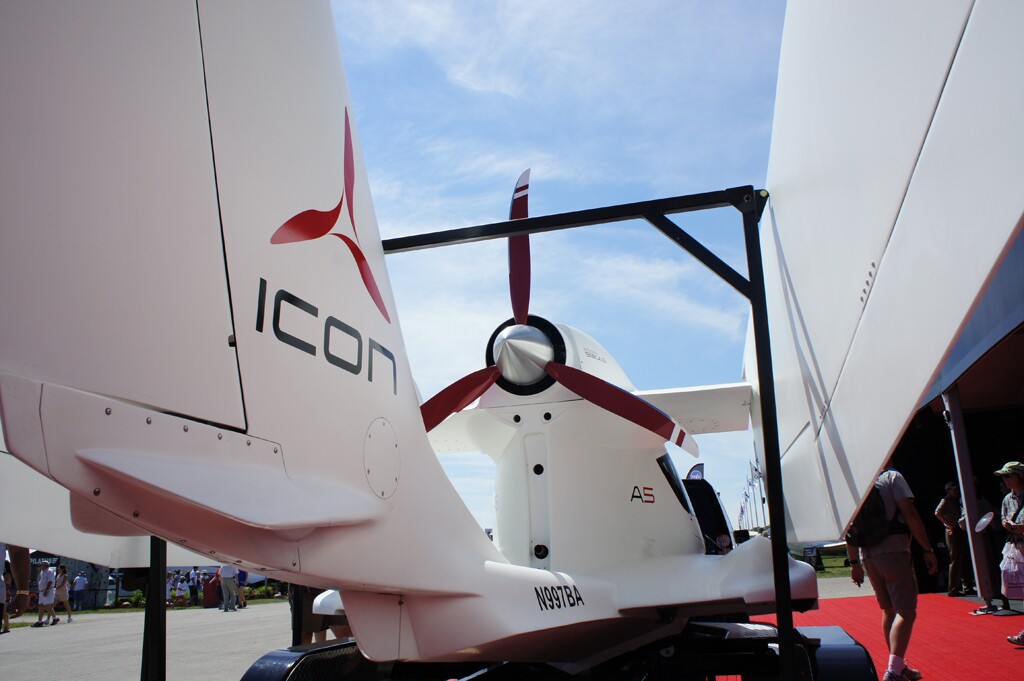Light Sport Aircraft (LSA) manufacturer, ICON Aircraft, has announced two major design enhancements aimed at to simplifying aircraft complexity and increase safety in its A5 amphibious, two-seat, composite carbon fiber plane. The first improvement for the plane,which is edging closer to production, is the elimination of wing flaps, which will simplify pilot operations, while the second is a spin-resistant design that will include, amongst other things, the addition of wing cuffs to lower the stall speed of the aircraft.
Spin resistance
While general aviation is inherently quite safe, when accidents do occur, it is the stall/spin scenarios that are responsible for 13.7 percent of all fatal accidents, according the Aircraft Owners and Pilots Association (AOPA). Of these accidents, it is slow-speed maneuvering prior to landing that is the most common accident scenario. Making the A5 spin resistant will help ensure that the pilot maintains control of the aircraft at all times, even if the airplane is inadvertently stalled.“Spin resistance is arguably the most significant safety improvement we could add to the already docile-handling A5,” said Matthew Gionta, ICON’s CTO and VP of Engineering. One safety feature already on the A5 is the Angle of Attack (AOA) indicator (standard on modern fighter jets) that shows the pilot at any given time exactly how the wing is flying, and most importantly, how close they are to a stall. “When combined with the AOA indicator, spin resistance adds a second level of safety where, in the event of a stall, the A5 remains wings-level and the pilot does not lose control of the aircraft.”

Eliminating the flaps
Removal of the flaps is the other improvement to the A5. Flaps are typically used to reduce an aircraft’s stall speed for landing. However, Light Sport Aircraft regulations already require that Light Sport Aircraft stall no faster than 45 knots without the use of flaps. Given this FAA requirement combined with the LSA maximum speed restriction, ICON eliminated the A5 flaps since they offer marginal benefit for their increased complexity.“When an airplane can function equally well with less complexity, the result is increased safety,” said Gionta. “The pilot of an A5 will never have to remember to set the flaps for landing, whether on water or land. This is a classic example where simplicity is elegance, and that translates directly into a safer aircraft for our pilots.”

Stepping up the pace
To ensure its focus remains solely on the remaining development of the production aircraft design, ICON Aircraft has announced Liberty Aerospace of Melbourne, FL, and Flytech Kft. of Szombathely, Hungary, as their suppliers of structural composite assemblies for the ICON A5 Light Sport Aircraft. ICON says outsourcing the composite structure manufacturing will not only allow it to reach production more quickly, but will also accelerate the production ramp to meet the demand it is already seeing for the A5.
ICON will receive major composite structural assemblies from these suppliers and will control all system installation, final assembly, finishing, and testing prior to delivery, with A5 production taking place at ICON’s facilities in Southern California.
ICON is currently taking orders for the A5. But don’t worry if you haven’t got your wings yet. The company says over one third of ICON’s current orders come from individuals who are not yet pilots – hopefully that’s not a cause for concern, but rather a reflection of the safety and accessibility of the A5 for novice pilots.
The first 100 customer deliveries of the A5 are reserved for the company’s ICON 100 program. This will be a Limited Edition (LE) series with a custom paint job and interior. They will be available for the fixed price of US$135,000 (no CPI increase) with deliveries scheduled to begin in fall 2011. The standard A5 is priced at US$139,000 (plus CPI increase) with deliveries scheduled for fall 2012. Orders can be placed at the ICON Aircraft website.


